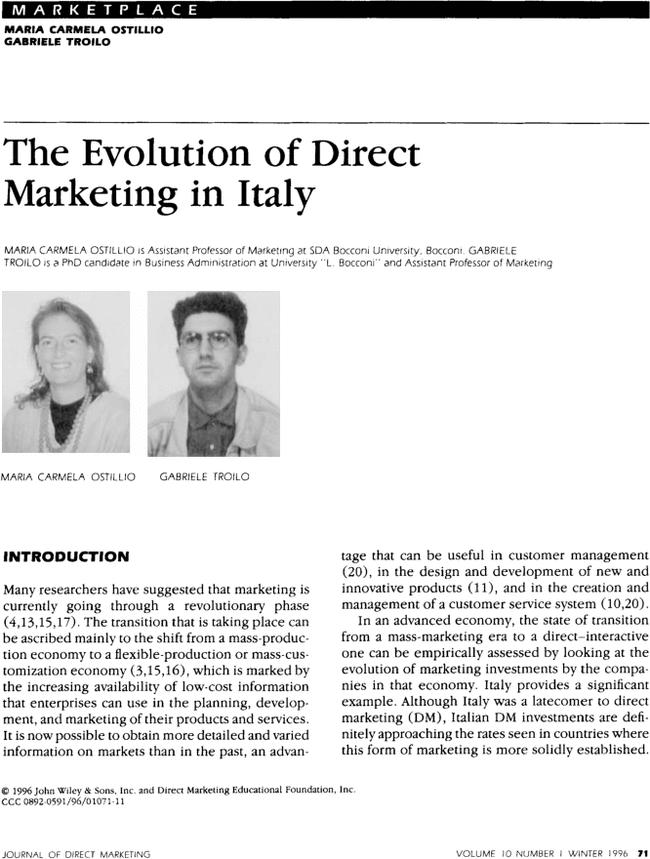The evolution of direct marketing in Italy
Journal of Direct Marketing
Pub Date : 1996-01-01
DOI:10.1002/(SICI)1522-7138(199624)10:1<71::AID-DIR6>3.0.CO;2-X
引用次数: 1
Abstract
Many researchers have suggested that marketing is currently going through a revolutionary phase (4,13,15,17). The transition that is taking place can be ascribed mainly to the shift from a mass-production economy to a flexible-production or mass-customization economy (3,15,16), which is marked by the increasing availability of low-cost information that enterprises can use in the planning, development, and marketing of their products and services. It is now possible to obtain more detailed and varied information on markets than in the past, an advantage that can be useful in customer management (20), in the design and development of new and innovative products (I 1) , and in the creation and management of a customer service system (10,20). In an advanced economy, the state of transition from a mass-marketing era to a direct-interactive one can be empirically assessed by looking at the evolution of marketing investments by the companies in that economy. Italy provides a significant example. Although Italy was a latecomer to direct marketing (OM), Italian OM investments are definitely approaching the rates seen in countries where this form of marketing is more solidly established.

意大利直销的演变
许多研究人员认为,市场营销目前正在经历一个革命性的阶段(4,13,15,17)。正在发生的转变可主要归因于从大规模生产经济向灵活生产或大规模定制经济的转变(3,15,16),其标志是越来越多的低成本信息可得性,企业可用于其产品和服务的规划、开发和营销。现在有可能获得比过去更详细和多样化的市场信息,这在客户管理(20)、设计和开发新的创新产品(1)以及创建和管理客户服务系统(10,20)方面是有用的优势。在发达经济体中,从大众营销时代到直接互动时代的过渡状态可以通过观察该经济体中公司营销投资的演变来进行经验评估。意大利就是一个显著的例子。虽然意大利是直接营销(OM)的后来者,但意大利的OM投资绝对接近这种营销形式更为稳固的国家。
本文章由计算机程序翻译,如有差异,请以英文原文为准。
求助全文
约1分钟内获得全文
求助全文

 求助内容:
求助内容: 应助结果提醒方式:
应助结果提醒方式:


